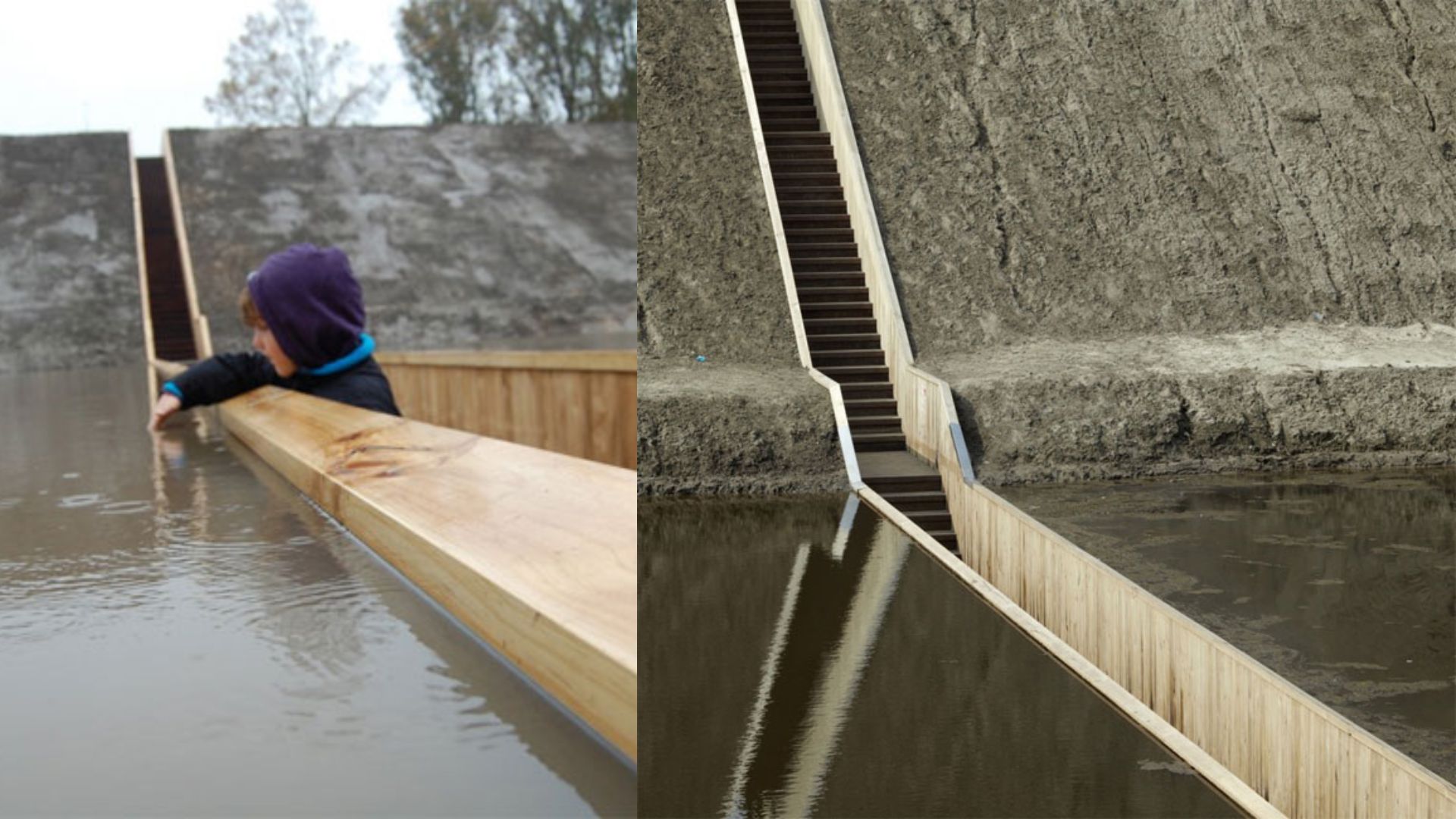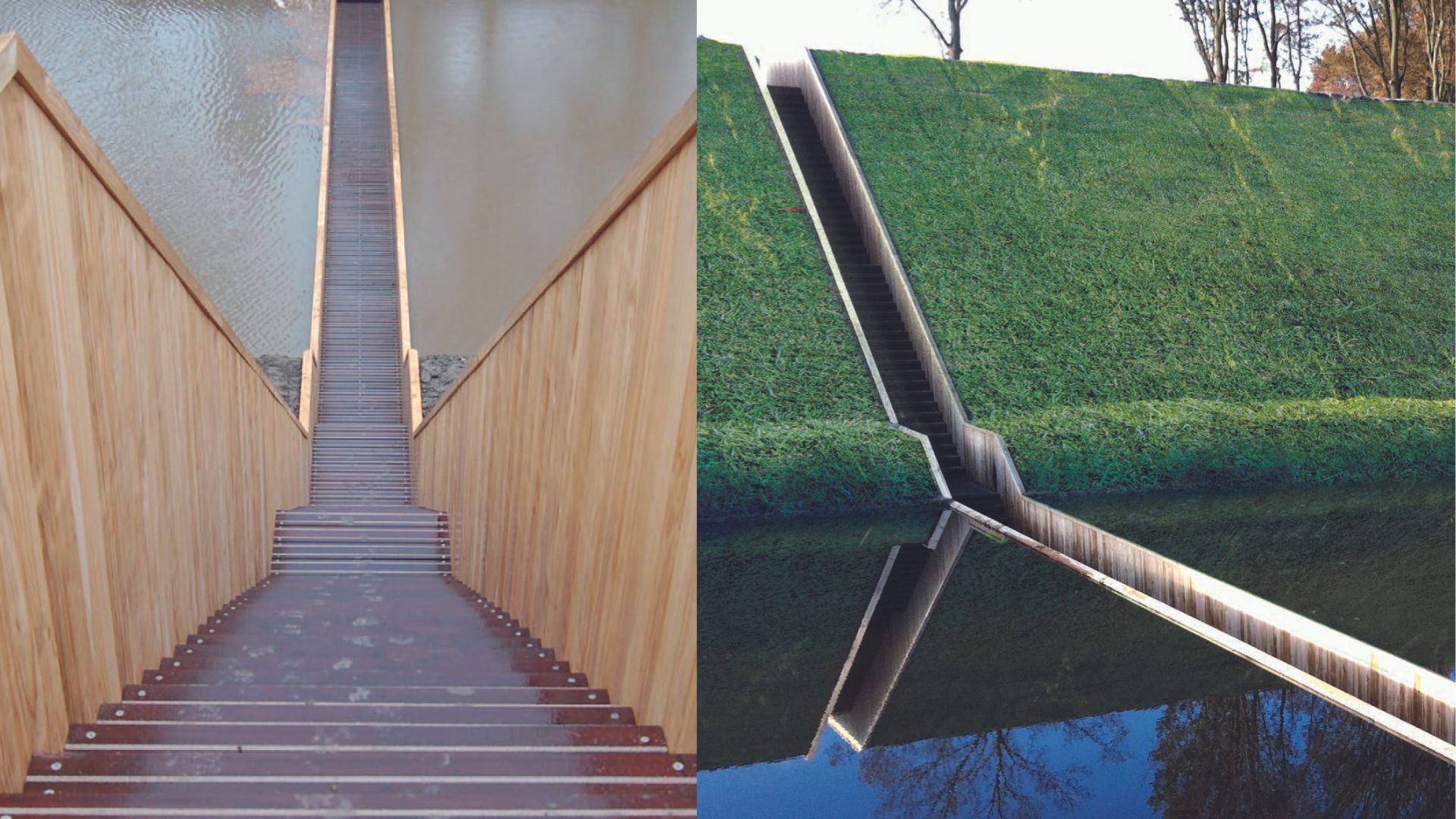Netherlands - An Invisible bridge parts the waters, invoking biblical images and preserving the ominous feel of an ancient moat in the 17th century the West Brabant Line.
The Mozerbrug (or Moses Bridge) is an engineering marvel that may—at first glance—cause people who are nervous around water to think twice before they cross.

The Mozerbrug is situated in Halsteren, Netherlands, the area being made up of fortresses and cities with an inundation zone to the north, used as moats deep enough to dissuade marauders on foot, but too shallow to allow for boats. The line fell into disrepair in the 19th century, but a recent restoration program has been in motion, which led to this peculiar “invisible” bridge.
Mozesbrug is made out of waterproof wood, waterproofed with EPDM foil. Most of the Moses Bridge rests below water. Walking across the Moses Bridge, once can stretch the arm and touch the water.
From almost every angle, the Moses Bridge blends seamlessly with the water. People strolling across the bridge appear as though they are magically suspended in the middle of the water—much like Moses when he parted the Red Sea.

For those who are wary of walking on a bridge that looks as though it could be completely submerged in water at any moment, the RO&AD architects who designed the bridge assure that flooding would not be an issue.
The Moses bridge is surrounded by closely monitored dams that keep the water level stable. In the unlikely event that the dams fail, there is a sophisticated network of pumps that can empty any excess water before it becomes an issue.